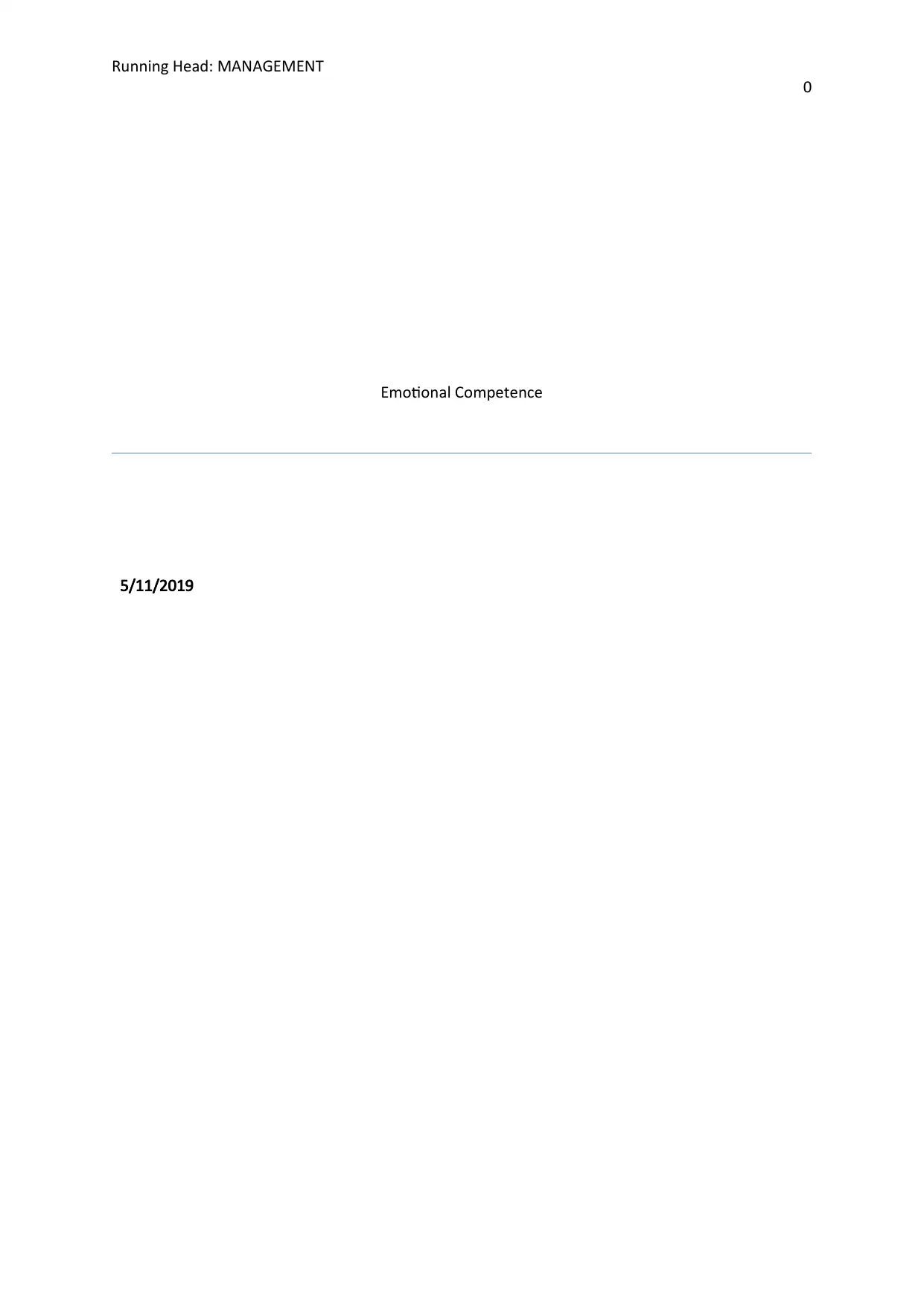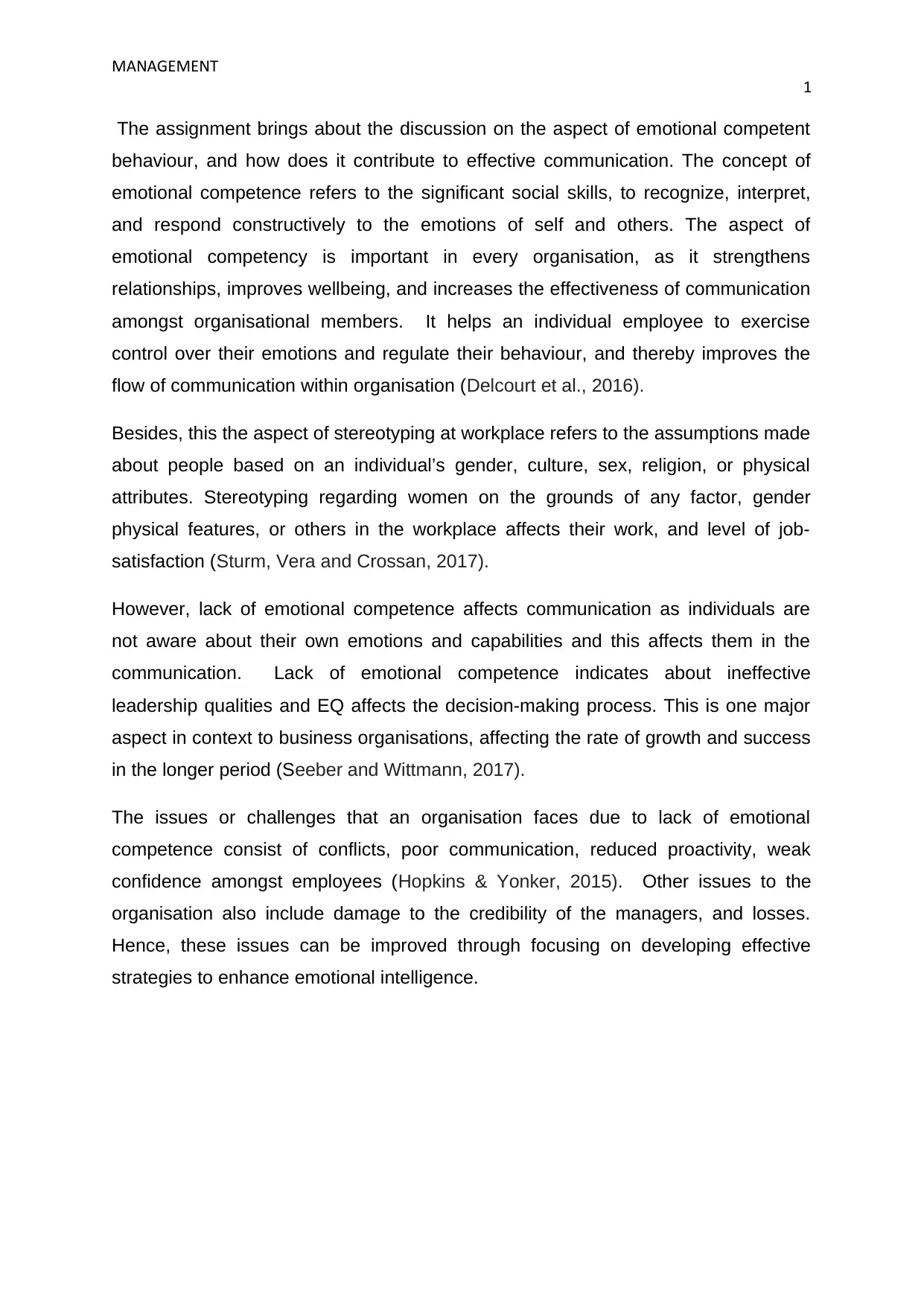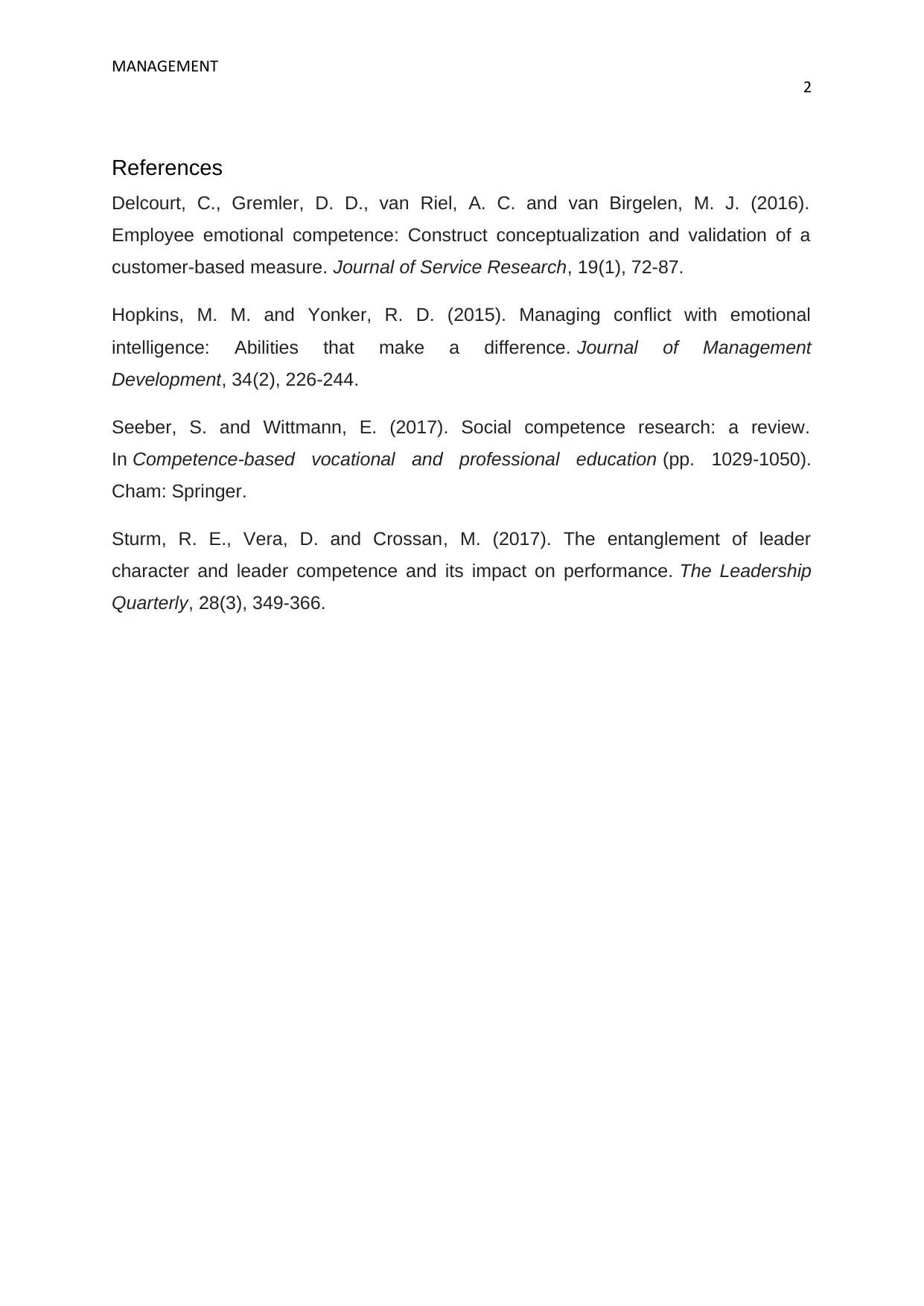Exploring Emotional Competence and Communication in Management
VerifiedAdded on 2023/03/23
|3
|504
|41
Essay
AI Summary
This essay discusses the importance of emotional competence in fostering effective communication within organizations. It defines emotional competence as the ability to recognize, interpret, and constructively respond to one's own emotions and the emotions of others. The essay highlights how emotional competence strengthens relationships, improves well-being, and enhances communication among organizational members. It also addresses the issue of stereotyping in the workplace and its impact on employees, particularly women, affecting their work and job satisfaction. The lack of emotional competence can lead to conflicts, poor communication, reduced proactivity, and weak confidence among employees, ultimately damaging managerial credibility and resulting in losses for the organization. The essay concludes by emphasizing the need for strategies to enhance emotional intelligence to mitigate these issues and improve organizational performance. Desklib provides a platform to access this and many other solved assignments for students.
1 out of 3





![[object Object]](/_next/static/media/star-bottom.7253800d.svg)